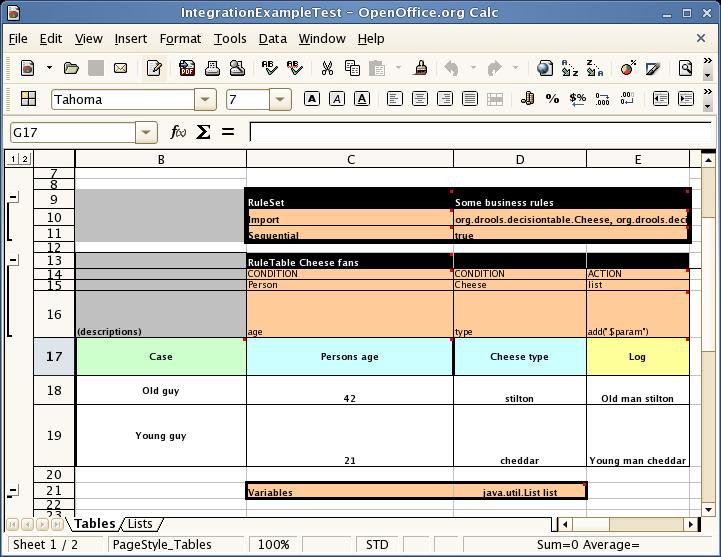Dieser Inhalt ist in der von Ihnen ausgewählten Sprache nicht verfügbar.
16.3. Open Office Example
Figure 16.1. Open Office Screenshot
In the above examples, the technical aspects of the decision table have been collapsed away (using a standard spreadsheet feature).
The rules start from row 17, with each row resulting in a rule. The conditions are in columns C, D, E, etc., and the actions are off-screen. The values' meanings are indicated by the headers in Row 16. (Column B is just a description.)
Note
Although the decision tables look like they process top down, this is not necessarily the case. Ideally, rules are authored without regard for the order of rows. This makes maintenance easier, as rows will not need to be shifted around all the time.
